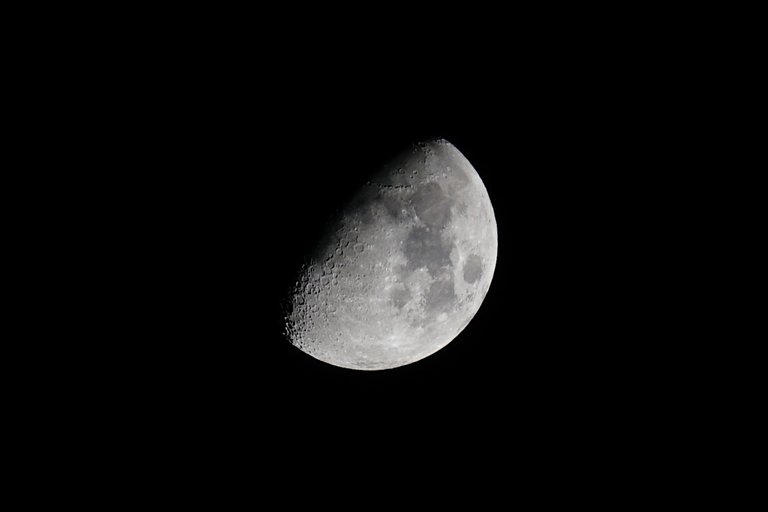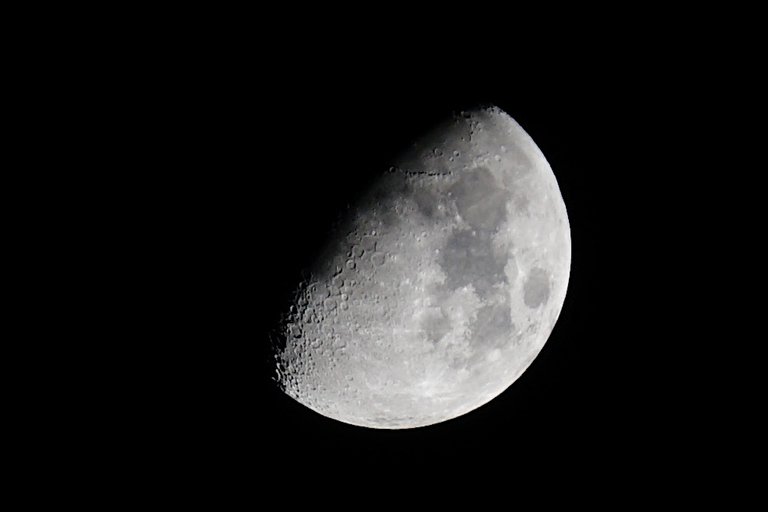Moon and the Native Americans
Hey dear community, first of all I would like to welcome you all to my new post and hope you had a day that brought some great experience into your life! Today I would like to discuss an interesting cultural topic and hope you are able to expand something.
Here are some pictures of the waxing moon and in about a week is the next full moon and the March full moon is also known as Worm Moon and is strongly connected to the Algonquian people, which are among today's Indigenous peoples of Canada. The Algonquian already knew that at this time the temperature has risen and as a result came out of the ground worms after the ground has thawed again and this tradition is particularly popular in America and Europe. In general, many names of the full moon can be traced back to the Native Americans where the moon had a very special importance and were an indicator of important events such as the beginning or the end of seasons and even then the Natives saw the moon as a kind of calendar and a lunar phase defined a month with 28 days. According to belief, the moon also played an important role when it comes to the creation of the earth and according to the Navajo, which is also considered one of the largest tribes in North America and inhabiting today's New Mexico, Utah or Arizona, it was the god Begochiddy who once created the moon. To this day, the Navajo consider the moon as a sign of creative powers and in their religion it is also considered a sacred celestial body and in honor, many ritual are celebrated. The full moon was also associated with spirituality or wisdom by the indigenous peoples and, similar to other cultures, the sun and the moon were also assigned a certain kind of duality and the moon was also considered a sign of femininity and according to other tribes, the moon was the personification of the male aspects.
Often in American mythology there is also talk of people who are said to have turned into the moon and the Kanamari who inhabit today's Brazil had the belief that once a boy and a girl fell in love at night with a covered face and did not notice that the two were siblings and out of shame he turned into the moon, she into the sun. There are more traditions about this legend and not always with a positive ending and it is often said that a boy fell in love with a girl and since she did not return the love, she transformed into the moon in order to be able to protect herself better and there are some other variations of this legend and with hundreds of different indigenous tribes you will find numerous other similar legends who reported about the transformation of people into this celestial body. When there is talk of two siblings, you can see parallels to Greek mythology where Selene and Helios are the personification of the moon and the sun and there are always parallels in mythology worldwide. The belief is also interesting among the North American natives Sioux who consider the moon and the sun as a couple and as a moon goddess Hanwi is also known and together with her husband Wi who is known as the personification of the sun they dominate the day as well as the night sky. Even among the Natives of Mexico, the moon had a central importance in mythology and in their diverse cult of gods there were numerous moon gods and a good examples are Ixchel who was revered by the Maya and the Aztecs revered Coyolxauhqui. Numerous old buildings in ancient Mexico show how important the moon was and you can even find some temples that were probably built specifically as a place of worship for the moon and numerous different cults have emerged among the indigenous peoples of Mexico in which the moon had a central importance.
Thanks a lot for stopping by and I hope you could learn something new about culture! I captured these pictures with my Camera Sony Alpha 6000 plus 55-210 mm lens.



Now this phase is going to be half and then disappear and the new moon will appear.
True :)
There are some Americans who does not really believe in the culture of moon unlike the Africa
I'm glad to hear your opinion on this topic :)
https://twitter.com/WayShola84156/status/1769971256298709495?t=rRgou9LgAh4UzeidCQ61xA&s=19
There are some part of the countries that I believe they worship moon
True!
The moon looked beautiful here as well as I had seen at night.
Glad that we shared this moment!
Thanks alot dear.
i saw a article one yaers ago, where it said, 50% of the americans believe the sun is a planet or something similar, is that really true?
I'm glad that you share additional knowledge under my contribution :)
Interesting to know about mythology of moon. Pretty
Happy that you could learn something new :)
https://twitter.com/lee19389/status/1770616608140017889
#hive #posh